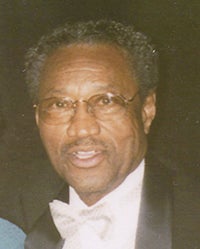Guest Column: Black History Month and the contributions of Carter G. Woodson across the nation
Published 8:00 pm Tuesday, February 22, 2022
|
Getting your Trinity Audio player ready...
|
Guest Column by John V. Smith
Carter G. Woodson is known today as “the father of Black history” and is credited with laying the foundations for the widespread adoption of Black studies in American schools. When Woodson founded the Association for the Study of Negro Life and History in 1915, the achievements of Blacks were largely ignored by professional historians. Convinced that without a recorded history the contributions of his race would be forgotten, Woodson set out to provide a means for the study of Black American heritage. With the founding of the association and, later, the Journal of Negro History, Woodson offered scholars a medium for the research and publication of articles on the Black experience. Negro History Week (now Black History Month), which Woodson launched in 1926, opened the study of history to the wider public, offering information needed to appreciate and understand the role of Blacks in American history.
Born the son of impoverished former slaves, Woodson’s early years were marked by an unwavering commitment to education. Forced to work oil his father’s farm and later in the coal mines of West Virginia, he was largely self-taught until the age of 19. After graduating from West Virginia’s Douglass High School in 2896, he went to Berca College in Kentucky, then famous for its acceptance of both white and black students. He left in 1900, to act as principal of his former high school, but returned to Berca in 1901. He received his B. Litt. degree in 1903.
For the next 15 years, Woodson divided his time between travel abroad, teaching and the continued study of history. For four years, he worked as a teacher and later as a school supervisor in the Philippines, and in 1906, having learned to speak French and Spanish fluently, he studied history for one semester in Sorbonne. On his return to the United States, he attended the University of Chicago. After earning his RA in 1907 and his M.A. one year later, he moved on to Harvard and later to a teaching post at a Washington, D.C., high school. This position enabled him to pay for his graduate studies and to do research for his dissertation at the Library of Congress. When, in 1912, Woodson earned his Ph.D. from Harvard, he became the second Black man in the United States to receive a doctorate in history.
By this time, Woodson was firmly engaged in the mission to which he would devote his life: the study and documentation of Black history. In 1915, Woodson and a group of four friends sat down in a Chicago YMCA to form the Association for the Study of Negro Life and History (now the Association for the Study of Afro-American Life and History, or ASALH. The association was the first historical society devoted exclusively to research on the Black American. It was established to encourage scholarly achievement, to sponsor research projects and to collect and preserve records documenting the Black past. At a time when few Blacks were invited to participate in historical conferences, the annual meeting of the association offered black scholars an opportunity to present research papers before their peers. Even more importantly, the association began publication in 1916 of a scientific quarterly, the Journal of Negro History.
Still recognized as the most distinguished periodical in the field of Black history, the Journal was innovative, both in its interpretation of history and in the methods of research used to collect data. As editor for more than 30 years, Woodson encouraged scholars to seek information that had been previously ignored by mainstream historians. Quoted in a Journal article by Jacqueline Goggin, Lorenzo Green recalled that “Black and also white scholars turned to The Journal of Negro History if they desired to publish findings at variance with the currently accepted views of Black people.” Covering a wide range of topics, the Journal led to a shift in the focus of historians from the master’s perspective to that of the slave’s. Woodson and other Journal contributors also used census data, birth and death certificates, marriage registers, letters, diaries and oral histories to investigate the Black past. Only recently has this method of research been widely accepted by historians.
Woodson retired from teaching in 1922 to concentrate on his work with the association. Obtaining the necessary funds to run the organization was always difficult, and Woodson spent much of his life struggling to keep the association afloat. During the first years of its founding, Woodson supported the association largely on his teacher’s salary. Although for a short period he obtained grants from the Rockefeller and Carnegie funds, he was forced in the 1930s — at the height of the Depression — to rely almost solely on contributions from individual Blacks and Black organizations.
As documented by the American Historical Review, at the 1984 issue ceremony of the Carter G. Woodson commemorative stamp, Jim Finch, then deputy postmaster general, remarked, “The Association was [Woodson’s] life … To him, no task was too small or unimportant if it helped the Association. Whether he was scrubbing the office floors or taking books to the post offices for mailing to other historians, Carter G. Woodson immersed himself in the Association’s activities.” Never married, Woodson reportedly once told a colleague, “I don’t have time to marry. I’m married to my work.”
In 1926, the first Negro History Week was established. Woodson described the event “as one of the most fortunate steps ever taken by the association.” Expanded in 1976 to include an entire month, the national celebration is held each year during the month of February to coincide with the birthdays of Frederick Douglass and Abraham Lincoln. Today, school programs, exhibits, essays and poetry contests are held during Black History Month to dramatize the achievements of Blacks and to encourage black children, in particular, to develop pride in their history. As quoted by Lerone Bennett in Ebony, W.E.B. DuBois commented that Woodson “literally made this country, which has only the slightest respect for people of color, recognize and celebrate each year, a week in which it studied the effect which the American Negro has upon life, who in a lifetime, unaided, built up such a national celebration” thought and action in the United States.
With the establishment of Black History Month, Woodson saw a need to publish a journal more closely associated with schools and one that simplified the study of history for the average reader. Thus, in 1937, Woodson founded the Negro History Bulletin. Until his death in 1950, Woodson devoted himself to directing the association, publishing its journals and editing the six-volume Encyclopedia Africana.
John V. Smith is an Albert Lea resident.





